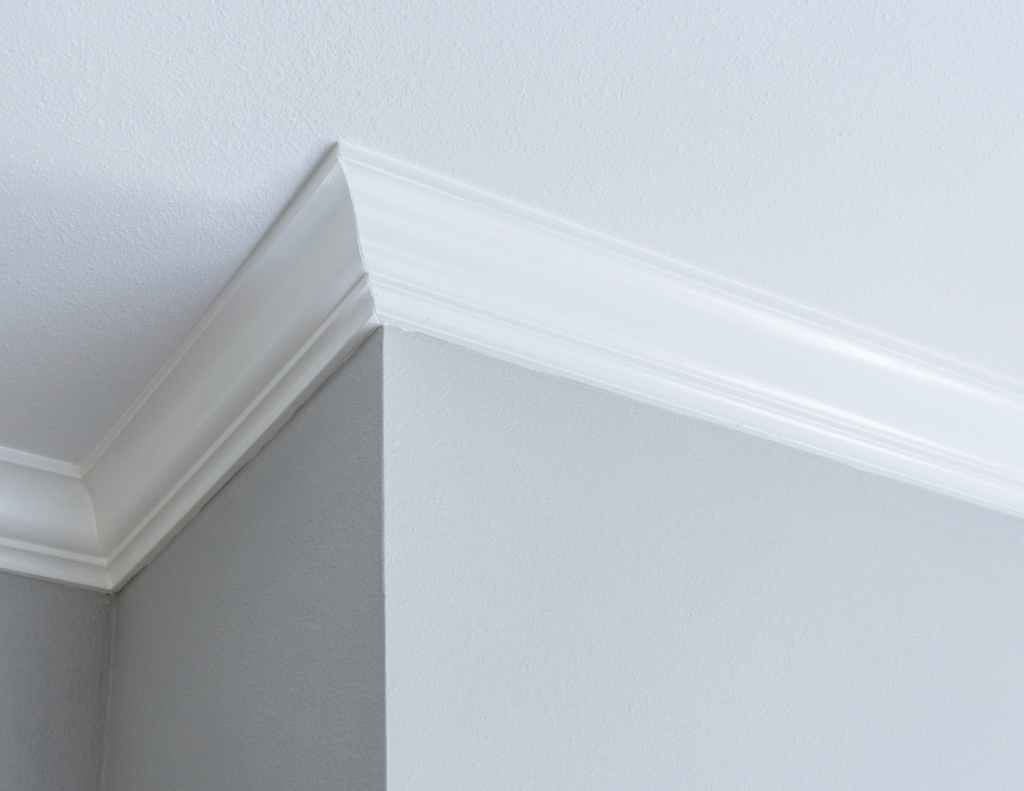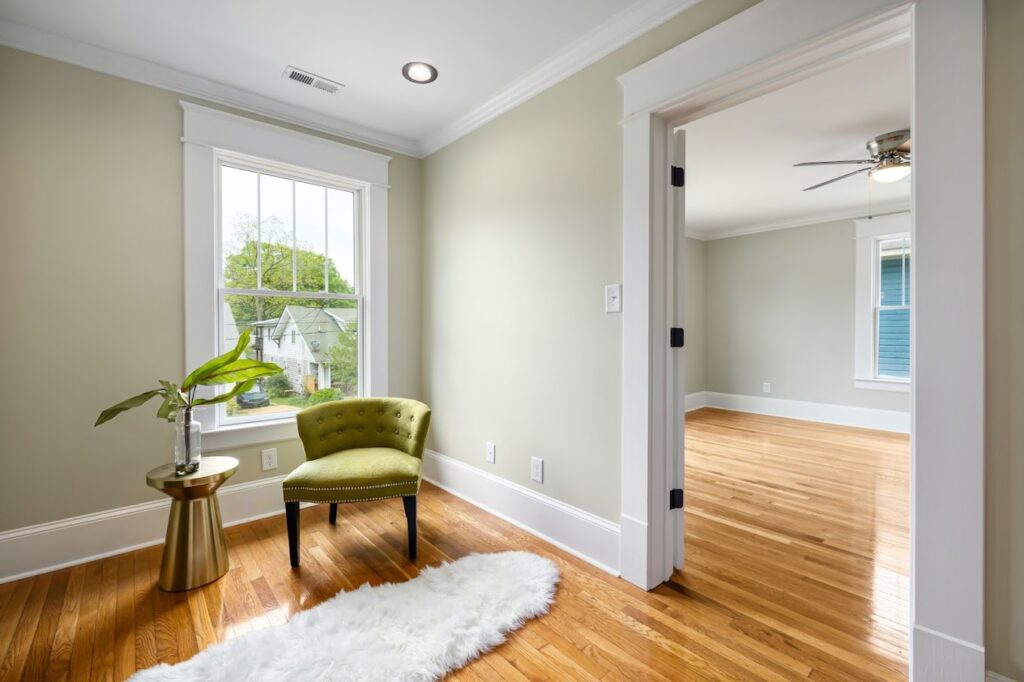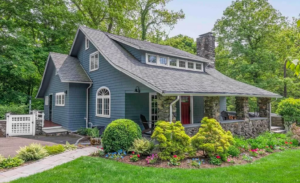How can I add elegance and character without a major renovation? One answer: crown molding.
This architectural detail instantly enhances any room, adding style, depth, and even boosting property value in Greenwich, CT. But with so many types of crown molding to choose from, finding the right fit for your home can feel overwhelming.
From traditional wood options to lightweight polystyrene, each style offers a unique touch.
In this guide, we’ll explore different types of crown molding, where to install them, and how professional interior painting ensures a flawless look.
Key Takeaways:
- Crown molding enhances home aesthetics by adding depth and refinement.
- Popular types include traditional, dentil, cove, stepped, and more.
- Materials range from wood to polystyrene, each with unique benefits.
- The right color and expert painting bring out the full beauty of crown molding.

What is Crown Molding?
Crown molding serves both a decorative and functional purpose in home design. At its core, it’s a stylish transition between walls and ceilings, giving a finished and cohesive look to any space. Whether bold and intricate or subtle and understated, crown molding enhances a home’s architectural character.
More than just aesthetics, crown molding can also help conceal small imperfections where walls meet ceilings. It adds polish and sophistication, making rooms appear taller and more refined. With so many types of crown molding available, the right choice can elevate the overall look of your home and even increase resale value.
Best Places to Install Crown Molding for Maximum Impact
Where you install crown molding makes a difference. The right placement enhances a home’s beauty and ties different elements of a room together. Here are some of the best locations:
- Living Room: Frames the space, drawing attention to high ceilings and architectural features.
- Dining Room: Creates an upscale, refined look that complements furniture and lighting.
- Kitchen: Enhances cabinetry and seamlessly connects upper walls to ceilings.
- Bedrooms: Brings a sense of warmth and structure, making the space feel more polished.
- Bathrooms: Adds a decorative touch while blending well with tile and fixtures.
- Hallways & Entryways: Defines spaces and enhances the flow of the home’s design.
Types of Crown Molding for Greenwich, CT Homes
1. Traditional Crown Molding
Traditional crown molding is a staple in home design, offering a timeless and versatile look. It features clean lines and smooth curves, making it a great fit for both historic and modern homes. Typically made from wood, MDF, or polyurethane, it provides durability while enhancing the overall aesthetic of any space. Homeowners often choose this style for its ability to blend seamlessly with various architectural details.
2. Dentil Molding
Dentil molding is known for its distinctive repeating block pattern, adding a sense of structure and detail to ceilings. This style is most commonly found in colonial and neoclassical homes, where symmetrical design is a key element. The intricate craftsmanship of dentil molding gives a formal and traditional feel, making it a popular choice for dining rooms, libraries, and formal living areas. While traditionally carved from wood, modern versions use lightweight materials for easier installation.
3. Cove Molding
Cove molding features a simple, concave profile that creates a smooth transition between walls and ceilings. This understated design works especially well in modern and minimalist interiors, where subtle detailing enhances a space without overwhelming it. It’s often used in homes with lower ceilings, as its soft curves provide a sense of openness. Cove molding is also a great option for pairing with additional trim, such as baseboards or chair rails, to create a cohesive look.
4. Egg-and-Dart Molding
Inspired by ancient Greek architecture, egg-and-dart molding showcases a repeating pattern of oval shapes (the “egg”) and arrow-like details (the “dart”). This decorative style is commonly seen in elegant and stately homes, particularly in grand entryways, formal dining rooms, and high-end living spaces. Traditionally crafted from wood or plaster, newer versions are available in polyurethane for a more affordable and lightweight alternative. It’s a go-to choice for homeowners who appreciate classic, ornamental design.
5. Stepped Crown Molding
Stepped crown molding offers a sleek, layered look that complements contemporary and transitional homes. Unlike traditional curved profiles, this design features multiple “steps” or layers, adding depth without excessive ornamentation. It’s often used in modern interiors, where it provides a clean, structured look that enhances ceiling height. Stepped molding pairs well with recessed lighting and works particularly well in open-concept spaces.
6. Rope Molding
Rope molding features a twisted, rope-like design that adds texture and depth to a room. This style is commonly used in coastal, farmhouse, and traditional homes, where it brings warmth and visual interest. It’s frequently found on cabinetry, fireplace mantels, and ceiling trims, adding a handcrafted feel to interior spaces. Whether stained to highlight its wood grain or painted for a seamless finish, rope molding provides an elegant decorative touch.
7. Bead Molding
Bead molding is a delicate trim that features a row of small, rounded beads, adding subtle texture to walls and ceilings. Often seen in cottage, farmhouse, and classic interiors, this molding enhances the cozy feel of a space. It’s frequently paired with baseboards, wainscoting, or chair rails, providing a polished and complete look. Homeowners who want a refined, understated detail without overwhelming their space often choose bead molding.
8. Craftsman-Style Molding
Craftsman-style molding is all about clean lines and minimal detailing, making it a great choice for bungalows, mission-style homes, and modern farmhouses. Unlike the highly decorative moldings of the past, this style emphasizes strong, squared edges that add a subtle, structured look. It’s often used to frame doors, windows, and ceilings, creating a cohesive and intentional design throughout the home. Its timeless appeal makes it a durable and lasting addition to any space.
9. Double-Cove Molding
Double-cove molding is an upgraded variation of standard cove molding, featuring two concave layers for a more defined, elegant appearance. This type of molding is ideal for formal spaces like dining rooms, upscale living areas, or historic restorations. The extra depth created by its layered design adds a sense of luxury without overpowering a space. When painted in a complementary color, it enhances the room’s overall aesthetic while maintaining a sophisticated, subtle elegance.
10. Polystyrene & Foam Molding
For homeowners looking for a budget-friendly and lightweight option, polystyrene and foam molding are excellent choices. These materials are easy to cut and install, making them ideal for DIY projects or rental properties. While they may not offer the same durability as hardwood moldings, they can be painted to mimic the look of traditional styles. This makes them a practical way to achieve an elegant aesthetic without the high price tag of solid wood moldings.
Enhance Your Home with Crown Molding & Expert Painting
Installing crown molding is one thing, but achieving a flawless finish takes skill and experience. Professional interior painters in Greenwich CT ensure that crown molding enhances a room’s overall design rather than looking like an afterthought.
Our painting process for crown molding:
- Surface Prep: We sand, clean, and prime for a smooth foundation.
- Precision Painting: Sharp, clean lines without drips or uneven edges.
- Custom Color Matching: The right shade to complement walls and ceilings.
- Seamless Integration: Ensuring molding blends naturally with surrounding surfaces.
- Long-Lasting Finish: High-quality paint protects against wear and discoloration.
A fresh coat of expertly applied paint takes types of crown molding to the next level, creating a professional, cohesive appearance throughout your home.
Call Greenhaus Painting today at 203-429-4424 for a FREE estimate! We proudly serve Westport, Wilton, CT, and surrounding areas.


